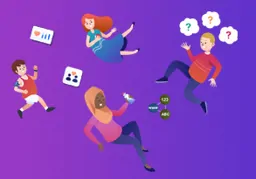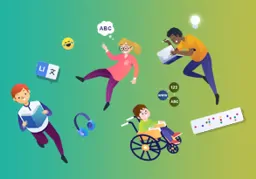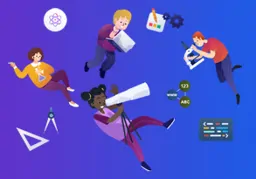AREA OF LEARNING AND EXPERIENCEMathematics and Numeracy
Guidance to help schools and settings develop their own curriculum, enabling learners to develop towards the four purposes.
2. Statements of what matters
Mandatory
The number system is used to represent and compare relationships between numbers and quantities.
Numbers are the symbol system for describing and comparing quantities. This will be the first abstract concept that learners meet in mathematics, and it helps to establish the principles of logical reasoning. In mathematics the number system provides learners with a basis for algebraic, statistical, probabilistic and geometrical reasoning, as well as for financial calculation and decision-making.
Knowledge of, and competence in, number and quantities are fundamental to learners’ confident participation in the world, and provide a foundation for further study and for employment. Computational fluency is essential for problem-solving and progressing in all areas of learning and experience. Fluency is developed through using the four basic arithmetic operations and acquiring an understanding of the relationship between them. This leads to preparing the way for using algebraic symbolisation successfully.
Algebra uses symbol systems to express the structure of mathematical relationships.
Algebra is the study of structures abstracted from computations and relations, and provides a way to make generalisations. Algebraic thinking moves away from context to structure and relationships. This powerful approach provides learners with the means to abstract important features and to detect and express mathematical structures of situations in order to solve problems. Algebra is a unifying thread running through the fabric of mathematics.
Algebraic thinking is essential for reasoning, modelling and solving problems in mathematics and in a wide range of real-world contexts, including technology and finance. Making connections between arithmetic and algebra develops skills for abstract reasoning from an early age.
Geometry focuses on relationships involving shape, space and position, and measurement focuses on quantifying phenomena in the physical world.
Geometry involves playing with, manipulating, comparing, naming and classifying shapes and structures. The study of geometry encourages the development and use of conjecture, deductive reasoning and proof. Measurement allows the magnitude of spatial and abstract features to be quantified, using a variety of standard and non-standard units. It can also support the development of numerical reasoning.
Reasoning about the sizes and properties of shapes and their surrounding spaces helps learners to make sense of the physical world and the world of mathematical shapes. Geometry and measurement have applications in many fields, including art, construction, science and technology, engineering, and astronomy.
Statistics represent data, probability models chance, and both support informed inferences and decisions.
Statistics is the practice of collecting, manipulating and analysing data, allowing representation and generalisation of information. Probability is the mathematical study of chance, enabling predictions of the likelihood of events occurring. Statistics and probability rely on the application and manipulation of number and algebra.
Managing data and representing information effectively provide learners with the means to test hypotheses, draw conclusions and make predictions. The process of reasoning with statistics and probability, and evaluating their reliability, develops critical thinking and analytical skills that are fundamental to enabling learners to make ethical and informed decisions.







